 |
 |
 |
 |
 |
 |
 |
 |
 |
 |
|
KICP Workshops & Events
|
KICP Lectures, Talks, & Events, 2012 EFI Colloquium: Eric Dahl, "The COUPP Dark Matter Search- Results from the First Year of Deep Underground Running at SNOLAB" January 9, 2012 | 4:15 PM | LASR Conference room 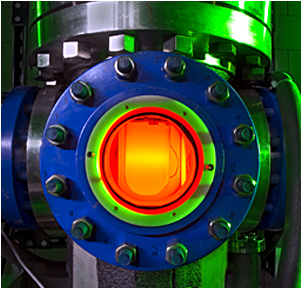 Related Links: KICP Members: Eric Dahl Scientific projects: COUPP/PICO Broader Horizons: Jeff Bezaire, Jump Trading January 10, 2012 | 10:30 AM | LASR Conference room 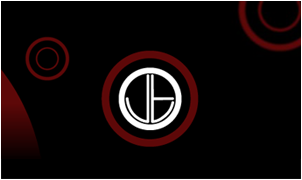 Next week as part of this series, we'll be hosting Jeff Bezaire from Jump Trading who will be speaking about his work as a quantitative trader. Abstract: As a "quant" working at an electronic trading firm, I develop models and strategies for fully automated, computerized trading of futures and equities in electronic markets around the world. In this talk I'll describe what I do, different roles for quants in finance and trading (and in particular in Chicago), and why physics/astrophysics grads are particularly good at it. The short answer – teasing causal relationships out of large datasets with time-varying, non-Gaussian noise, horrible non-stationary correlated systematics, from telemetry of questionable quality, where understanding what's going on at the hardware level is important… and making it all run fast too. Jump Trading Related Links: KICP Students: Jennifer Helsby Meg Urry, Yale University, "Women in Science: Why So Few?" January 18, 2012 | 12:00 PM | Kent 120 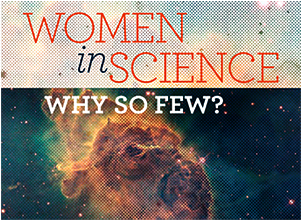 on Wednesday January 18th, at 12pm noon at Kent 120. Talk: Women in Science: Why So Few? Women continue to be underrepresented in STEM fields (Science, Technology, Engineering, and Mathematics). The gender imbalance is particularly large in Physics, where fewer than 20% of college physics majors are women. Decades of research suggest this is due in large part to lower expectations and evaluations of women as leaders, thinkers, do-ers. I discuss the experimental data and outline steps that can be taken to mitigate these obstacles. Fuller participation is better for the field and better for everyone. Speaker: Prof. Meg Urry Israel Munson Professor of Physics and Astronomy Chair, Department of Physics Director, Yale Center for Astronomy & Astrophysics Yale University Related Links: KICP Members: Hsiao-Wen Chen; Randall H. Landsberg SWIP/KICP Pizza with Professors February 20, 2012 | 5:30 PM | Kersten Family Atrium of the Gordon Center for the Integrative Sciences 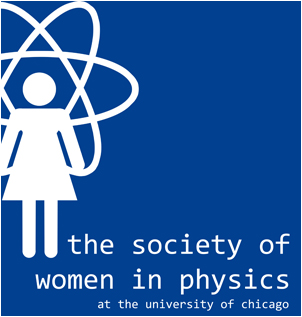 The Society of Women in Physics (SWIP) at the University of Chicago is partnering with the Kavli Institute for Cosmological Physics (KICP) to hold a dinner for undergraduate students interested in physics. Professors and Postdocs will join students for a pizza dinner and roundtable discussion about the joys and stresses of pursing a career in physics. Broader Horizons: Kim Coble, Chicago State University, "Teaching and Research at an Urban Comprehensive University" February 27, 2012 | 4:00 PM | TAAC 67 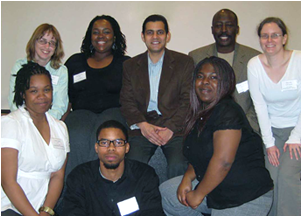 Related Links: KICP Students: Jennifer Helsby Astronomy Open House March 2, 2012 | 9:00 AM | LASR conference room 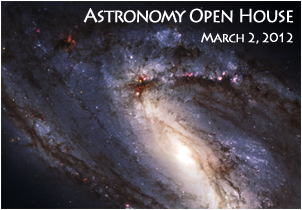
Please note that you are all invited to the Wine and Cheese Reception which begins at 4:30 pm. Related Links: KICP Members: Edward W. Kolb KICP @ 2012 NSTA National Conference on Science Education "At the Crossroads for Science Education" March 30 - April 1, 2012 | Indianapolis, IN 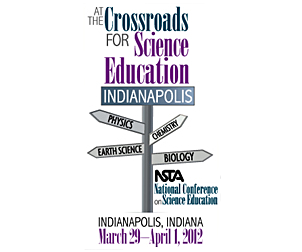
Related Links: KICP Members: Randall H. Landsberg; Kathryn K. Schaffer; Mark Subbarao KICP Students: Louis Abramson EFI Colloquium: Don Lamb, University of Chicago, "Scientific Discovery Through Large-Scale Computer Simulations: Type Ia Supernovae and High Energy Density Physics Experiments" April 2, 2012 | 4:15 PM | LASR conference room 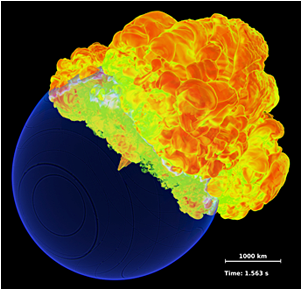 Related Links: KICP Members: Donald Q. Lamb John Carlstrom, "Exploring the Universe from the Bottom of the World" April 20, 2012 | 7:00 PM | The Adler Planetarium, Universe Theater Website Astronomy Lecture presented by Dr. John Carlstrom We are in the middle of a revolution in our understanding of the Universe. We can finally begin to answer questions such as "How old is the Universe? How did it start? What is the Universe made of? Cosmologists at the University of Chicago have been searching for answers to these questions in one of the most forbidding places on Earth: the high Antartica plateau. Dr John Carlstrom will speak about new measurements being carried out with the 10-m South Pole Telescope to test the inflation theory of the origin of the Universe and to investigate the nature of Dark Energy. The South Pole Telescope studies the Cosmic Microwave Background radiation, the fossil light from the Big Bang, providing a direct view of the Universe as it was 14 billion years ago. John E. Carlstrom is the Subramanyan Chandrasekhar Distinguished Service Professor at the University of Chicago and the deputy director of the Kavli Institute for Cosmological Physics. He received his Ph.D. in physics from the University of California at Berkeley in 1988. Dr. Carlstrom is a member of the American Academy of Arts and Sciences and the National Academy of Sciences. He has received several awards including a MacArthur Fellowship. Read more >> Related Links: KICP Members: John E. Carlstrom Scientific projects: South Pole Telescope (SPT) HEP seminar: Maria Monasor, University of Chicago, "Recent Results from the Pierre Auger Observatory" April 23, 2012 | 4:15 PM | LASR Conference room 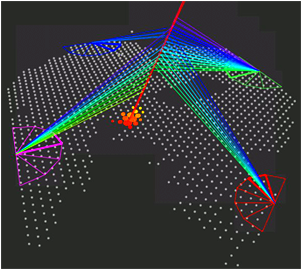 Related Links: KICP Members: Maria Monasor Scientific projects: Pierre Auger Observatory (AUGER) Cafe Scientifique: Brad Benson, "The Ends of the Earth & the Beginning of the Universe: The Big Bang, Dark Energy & the South Pole" April 23, 2012 | 7:00 PM | Map Room - 1949 North Hoyne Ave Chicago, IL 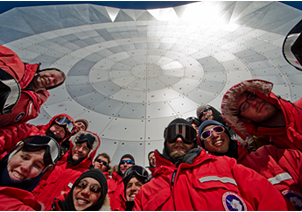 Related Links: KICP Members: Bradford A. Benson Scientific projects: South Pole Telescope (SPT) Broader Horizons: Francis Slakey, Georgetown University May 22, 2012 | 3:30 PM | LASR Conference room 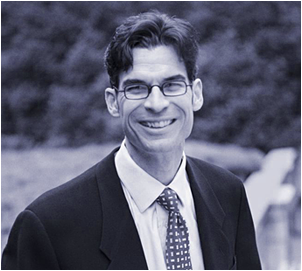 Related Links: KICP Students: Jennifer Helsby Special colloquium: Geoff Marcy, Honorary Degree Recipient, "ExoPlanets: From Jupiters to Earths" June 7, 2012 | 4:15 PM | KPTC 106 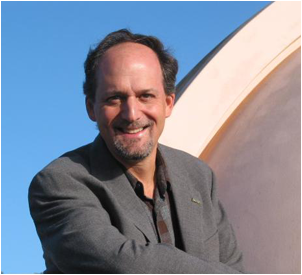 Science in the Second City June 14, 2012 | 6:30 PM | Adler Planetarium & Astronomy Museum Website You are cordially invited to attend the Chicago Council on Science and Technology's 2nd Annual Fundraiser "Science in the Second City" The Evening's Events Include: "Discovering Alien Worlds" by Astrophysicist Edward "Rocky" Kolb, Award Ceremony, Silent Auction, Cocktails and Plated Dinner. Event Emcee: * Tammie Souza, Meteorologist /Fox News * Edward "Rocky" Kolb, Professor of Astronomy & Astrophysics, University of Chicago with special guest Jacob Bean, Assistant Professor, Department of Geophysical Sciences and the College, University of Chicago Proceeds from this event will support "The Chicago Council on Science and Technology's public programming." Read more >> Related Links: KICP Members: Edward W. Kolb NASA Teleconference About Record-Breaking Galaxy Cluster August 15, 2012 | 12:00 PM Website NASA will hold a media teleconference to discuss an extraordinary galaxy cluster that is smashing several important cosmic records. The panelists are: * Michael McDonald, Hubble Fellow, Massachusetts Institute of Technology, Cambridge, Mass. * Bradford Benson, astrophysicist, KICP * Megan Donahue, professor of astronomy, Michigan State University, East Lansing * Martin Rees, professor of cosmology and astrophysics, University of Cambridge, United Kingdom Read more >> Related Links: KICP Members: Bradford A. Benson Scientific projects: South Pole Telescope (SPT) Bradford Benson: "The Ends of the Earth & the Beginning of the Universe: The Big Bang, Dark Energy & the South Pole" September 14, 2012 | 7:00 PM | Adler Planetarium Website One hundred years ago humans first arrived at South Pole and for the past 20 or so years scientists have traveled there to build telescopes to study the early Universe. These experiments measure light left over from the Big Bang, the cosmic microwave background (CMB). They provide a unique snapshot of the infant Universe at a time when it was only ~400,000 years old, or 0.003% of its current age. These measurements and other evidence tell us that the Universe began with a Big Bang about 14 billion years ago, and that it contains only 4 percent "ordinary" matter (e.g., stars and galaxies, you and me, etc.). The rest of the Universe consists of two mysterious dark components: Dark Matter and Dark Energy. I will discuss evidence for the Big Bang, Dark Matter, and Dark Energy; the latest results from the South Pole, and what its like to work at the bottom of the world. Dr. Bradford Benson is a postdoctoral fellow at the Kavli Institute for Cosmological Physics at the University of Chicago. He graduated from the University of Wisconsin-Madison in 1999, received his Ph.D. in physics from Stanford University in 2004, and was first a postdoctoral researcher at the University of California-Berkeley. Dr. Benson has published over 50 scientific papers. His scientific interests include clusters of galaxies, sub-mm and mm-wavelength detector development, and measurements of the cosmic microwave background, the 14 billion year old light left-over from the Big Bang. His main goals are to develop instrumentation and make observations that can answer some of the biggest questions in cosmology: What physics was responsible for the Big Bang? What is Dark Energy? What is the mass of the neutrino? How did they affect the growth of the largest structures in the Universe? Read more >> Related Links: KICP Members: Bradford A. Benson Scientific projects: South Pole Telescope (SPT) KICP Welcome Reception October 9, 2012 | 5:00 PM | Front Lawns of the LASR Building 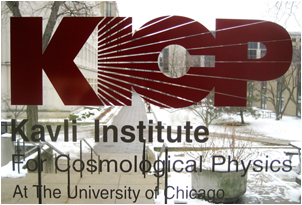 John Carlstrom, "Exploring the Universe from the Bottom of the World" October 11, 2012 | 5:00 PM | School of the Art Institute of Chicago 112 South Michigan Ave., SAIC Ballroom Website Speaker: John Carlstrom, PhD., Professor at the Departments of Astronomy & Astrophysics, Physics, and the Enrico Fermi Institute; and Director of the Kavli Institute for Cosmological Physics at the University of Chicago Abstract: Our quest to understand the origin, evolution and make-up of the Universe has undergone dramatic and surprising advances over the last decades. Much of the progress has been driven by measurements of the cosmic microwave background radiation, the fossil light from the big bang, that provide a glimpse of the Universe as it was 14 billion years ago. By studying tiny variations in the background radiation, cosmologists have been able to test theories of the origin and evolution of the Universe, as well as determine that ordinary matter (the stuff that makes up stars and humans alike) accounts for a mere 4% of the density of the Universe, that the mysterious dark matter accounts for six times that amount, and that a still-elusive and poorly understood "dark energy" is required to make up the remaining 70% of the Universe. After reviewing how we have arrived at such startling conclusions, this talk will focus on new measurements being carried out with the 10-meter South Pole Telescope to test theories of the origin of the Universe and to investigate the nature of mysterious dark energy. Read more >> Related Links: KICP Members: John E. Carlstrom Scientific projects: South Pole Telescope (SPT) Webcast with Josh Frieman, "Can a New Camera Unravel the Nature of Dark Energy?" October 12, 2012 | 12:00 PM | Kavli Foundation Website ONE OF THE MOST AMBITIOUS astronomical surveys in history will soon begin to answer perhaps the biggest question in cosmology: Why is the universe expanding at an ever accelerating rate? On Sept. 12, a new powerful camera on the Victor M. Blanco Telescope at the Cerro Tololo Inter-American Observatory in Chile saw First Light. The milestone paves the way for survey operations to begin in December. The Dark Energy Camera, constructed at the U.S. Department of Energy's Fermi National Accelerator Laboratory in Batavia, Illinois and equipped with 570 megapixels, is expected to image 300 million galaxies, 100,000 galaxy clusters and 4,000 supernovae as far as 8 billion light years away during the five-year Dark Energy Survey. The multinational project will use the data it collects to study four probes of dark energy, the mysterious and unexplained force driving the accelerated expansion of the universe. They include the study of galaxy clusters, supernovae, the large-scale clumping of galaxies and weak gravitational lensing - the phenomenon by which the light from distant galaxies is stretched and magnified by foreground clusters of galaxies. More than 120 scientists from 23 institutions in the United States, Spain, the United Kingdom, Brazil and Germany are involved in the Dark Energy Survey. On Friday Oct. 12, science writer Bruce Lieberman will ask questions from the public about the survey and the new camera that will drive it in a roundtable interview with Joshua Frieman, director of the survey and a member of the Kavli Institute for Cosmological Physics (KICP) at the University of Chicago, and Brenna Flaugher, project manager at Fermilab for the Dark Energy Camera. Read more >> Related Links: KICP Members: Joshua A. Frieman Scientific projects: Dark Energy Survey (DES) Dietrich Muller, University of Chicago, "HUNDRED YEARS OF COSMIC RAYS: Some Reflections on the Research in Chicago" November 8, 2012 | 4:15 PM | KPTC 106 This year marks the anniversary of a serendipitous discovery made by Victor Hess in his 1912 balloon flight: the discovery of what later was called the cosmic radiation. Attempts to understand this enigmatic phenomenon provided the motivation for developments that greatly affected the course of physics and astronomy through the following century. First, early studies of cosmic-ray interactions in the atmosphere laid the foundations of high-energy particlephysics, before accelerator laboratories entered this field in the mid-1900's. Subsequently, stratospheric balloons and space probes begun to make possible direct observations of cosmic rays above the atmosphere. These observations led to other entirely new areas of research:particle astrophysics, astronomy with gamma-rays and x-rays, and space plasma physics. Among the numerous institutions involved in cosmic-ray research world-wide, the University of Chicago played a major role from the 1920's to the present time. We shall review some of these activities, from the emotional battles about the nature of the cosmic rays in the early times, to particle physics experiments in the 1930's and 1940's, to in-situ studies in space and on balloons since the 1960's, and to the return to ground-based installations at present. Related Links: KICP Members: Dietrich Muller Kavli Foundation President Robert Conn visits the KICP November 14, 2012 | 4:30 PM | KICP 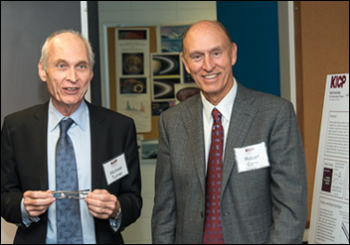 All members of the KICP are invited to attend a reception for Kavli Foundation President, Robert Conn on Wednesday, November 14th. The reception is being held in the LASR conference room from 4:30 - 6:30 p.m.. Many of our Fellows and projects will be presenting posters to show Dr. Conn the many aspects of research here at the KICP. Special EFI Seminar: Pedro Facal, University of Chicago, "Radio-detection of ultra high energy cosmic rays" December 11, 2012 | 3:30 PM | LASR conference room 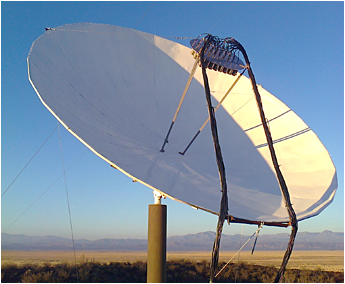 Related Links: KICP Members: Pedro Facal Scientific projects: Microwave Detection of Air Showers (MIDAS) |


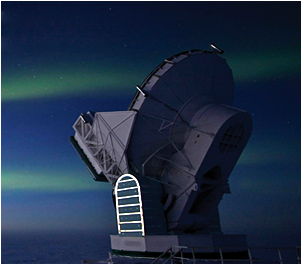
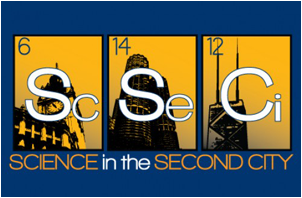
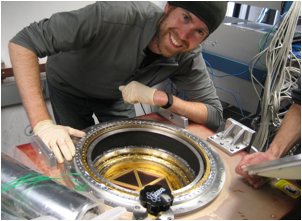

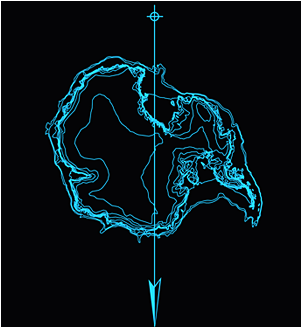
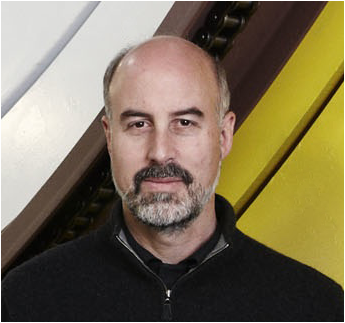



 Overview
Overview